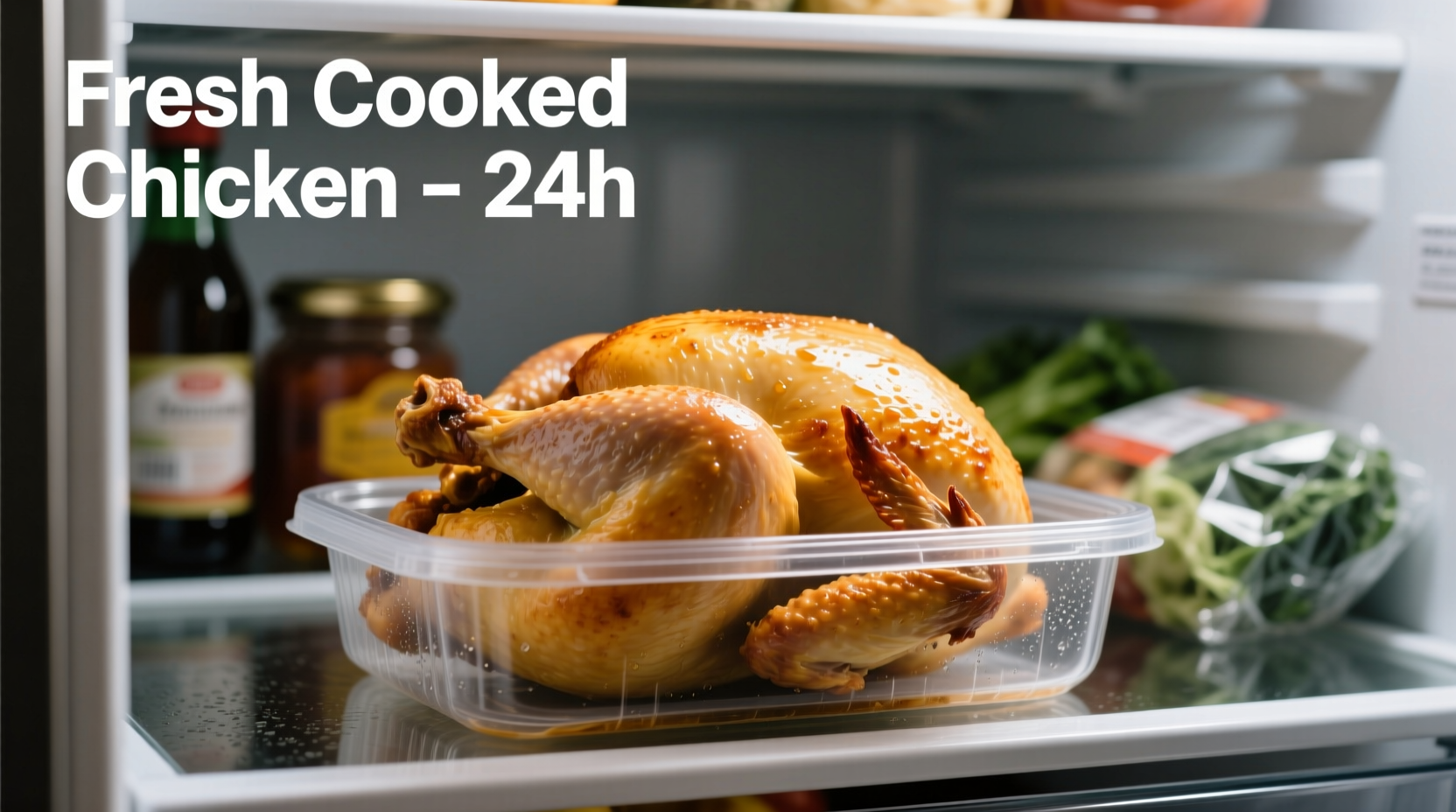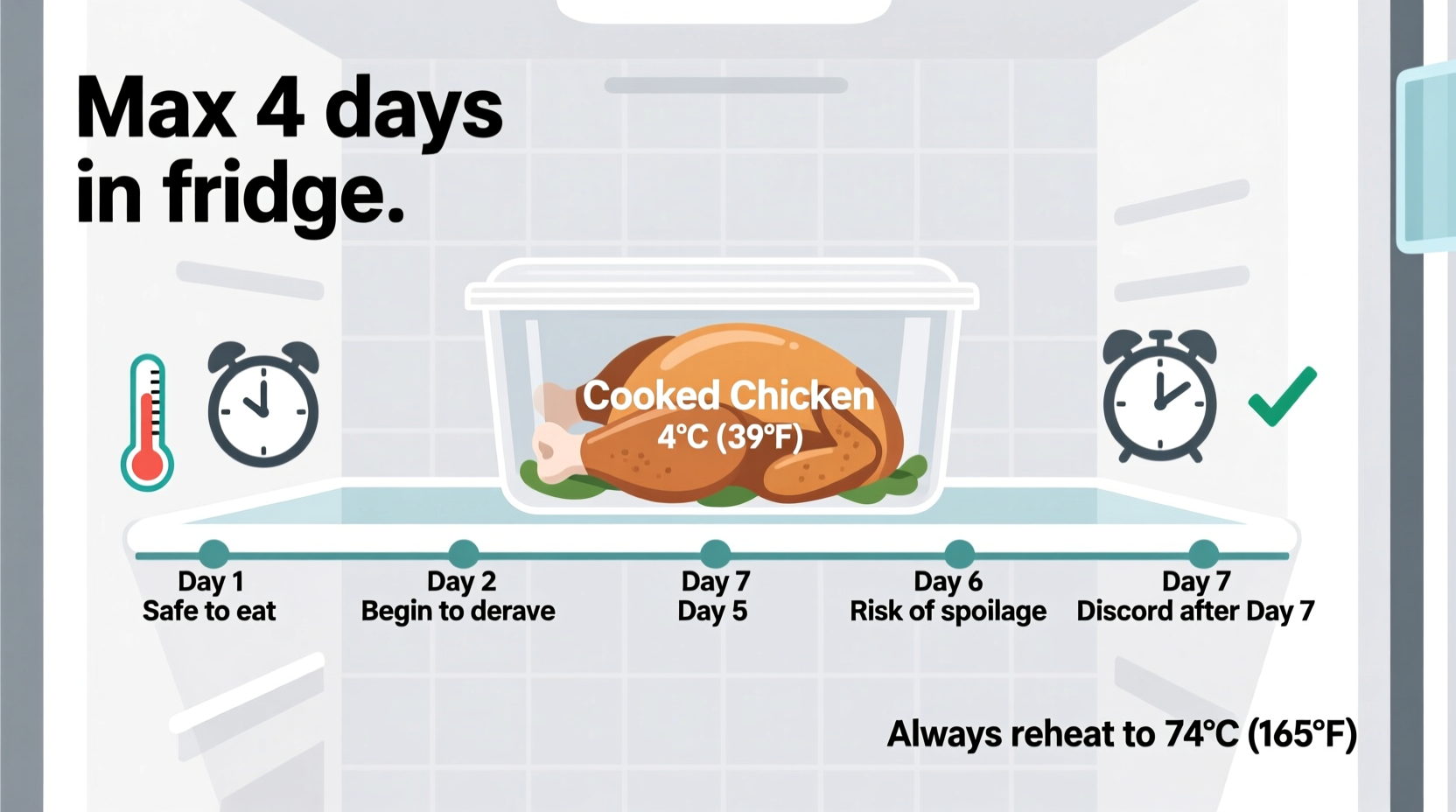Ever wonder if that leftover chicken from Sunday's dinner is still safe to eat on Thursday? You're not alone. According to a USDA survey, 70% of home cooks aren't confident about proper cooked poultry storage times. Getting this wrong isn't just about wasted food—it's a serious food safety issue that could land you or your family with food poisoning.
Why the 3-4 Day Rule Exists: The Science Behind Safety
Understanding why cooked chicken has such a short shelf life requires knowing how bacteria behave. The "danger zone" for food safety spans from 40°F to 140°F (4°C to 60°C), where harmful bacteria like Salmonella and Campylobacter multiply rapidly. Even properly cooked chicken becomes vulnerable once it cools to room temperature.
When you refrigerate cooked chicken promptly (within 2 hours of cooking, or 1 hour if room temperature exceeds 90°F), you slow bacterial growth significantly—but don't stop it completely. The 3-4 day guideline represents the point where bacterial levels could reach dangerous concentrations, even if the chicken shows no visible signs of spoilage.
| Storage Condition | USDA Recommendation | Common Misconception |
|---|---|---|
| Refrigerator (40°F or below) | 3-4 days | "It's good for a week if it smells fine" |
| Room temperature | Discard after 2 hours | "Leaving it out overnight is okay if covered" |
| Freezer (0°F) | 2-6 months | "Frozen chicken lasts forever" |
This comparison shows why following official guidelines matters more than sensory evaluation alone. Pathogenic bacteria often don't produce noticeable changes in food appearance or smell until they've reached dangerous levels.
Factors That Shorten Cooked Chicken's Shelf Life
Not all cooked chicken lasts the full 4 days. These critical factors affect how quickly your leftovers become unsafe:
- Initial cooking temperature: Chicken must reach 165°F (74°C) internally to kill harmful bacteria. Undercooked chicken starts with higher bacterial loads
- Cooling speed: Leaving chicken at room temperature longer than 2 hours before refrigeration allows exponential bacterial growth
- Storage container: Airtight containers prevent cross-contamination and moisture loss better than loosely covered dishes
- Refrigerator temperature: Many home refrigerators run above 40°F—use a thermometer to verify
- Handling practices: Using contaminated utensils when serving introduces new bacteria
A CDC analysis of poultry-related foodborne illness outbreaks shows that improper storage accounts for 38% of cases, with "it still looked and smelled fine" being the most common reason people consumed spoiled chicken.

How to Maximize Your Cooked Chicken's Freshness
Follow these professional kitchen techniques to get the most from your leftovers while staying safe:
Immediate Post-Cooking Protocol
Cool chicken rapidly by dividing large quantities into smaller portions. Place hot containers in an ice bath while stirring occasionally—this brings food through the danger zone faster than leaving it on the counter. Never put steaming hot chicken directly into the refrigerator, as it raises the internal temperature of your appliance.
Storage Container Selection
Choose shallow, airtight containers that allow chicken to lie in a single layer. Glass containers maintain temperature better than plastic, but either works if properly sealed. Remove chicken from takeout containers immediately—those aren't designed for long-term storage.
Strategic Refrigerator Placement
Store cooked chicken on middle shelves where temperatures are most consistent. Avoid the refrigerator door, which experiences frequent temperature fluctuations. Keep it separate from raw meats to prevent cross-contamination.
Labeling System That Works
Use masking tape and marker to label containers with contents and date. "Grilled chicken - June 15" beats "Leftovers" any day. This simple practice reduces the "what is this and when did I make it?" dilemma that leads to unsafe consumption decisions.
When in Doubt: How to Spot Spoiled Cooked Chicken
Don't rely solely on smell—pathogenic bacteria often don't produce noticeable odors. Check these multiple indicators:
- Texture: Slimy or sticky surface, even if just in one spot
- Color: Yellow, green, or gray discoloration beyond normal cooking changes
- Smell: Sour, ammonia-like, or sulfur (rotten egg) odors
- Mold: Any visible fuzzy spots, even small ones
If you notice even one of these signs, discard the chicken immediately. Never taste questionable poultry to "check" if it's spoiled—this could make you sick.
Freezing Cooked Chicken: Your Long-Term Solution
When you can't finish chicken within 3-4 days, freezing extends safety and quality significantly:
- Best timeframe: 2-6 months for optimal quality (safe indefinitely but quality degrades)
- Proper wrapping: Double-wrap in freezer paper or vacuum seal to prevent freezer burn
- Portion control: Freeze in meal-sized portions for easy thawing
- Thawing method: Refrigerator thawing takes 24 hours but is safest; cold water thawing takes 1-3 hours
Never thaw frozen chicken at room temperature or in warm water—this creates perfect conditions for bacterial growth in the outer layers while the center remains frozen.
Safe Reheating Practices for Leftover Chicken
Proper reheating is your final safety checkpoint. Whether using microwave, oven, or stovetop:
- Heat to 165°F (74°C) internal temperature—use a food thermometer to verify
- Stir or rotate food during reheating for even temperature distribution
- Add moisture (broth, sauce) to prevent drying during reheating
- Consume immediately after reheating—don't return to refrigerator
Remember: Each reheating cycle degrades quality and increases food safety risks. Divide large portions before initial refrigeration to avoid multiple reheating cycles.
Special Considerations for Different Chicken Preparations
Cooked chicken doesn't exist in a vacuum—sauces, sides, and preparation methods affect shelf life:
- Chicken salad: Mayonnaise-based versions last only 3-4 days due to dairy content
- Chicken soup: Broth-based soups last 3-4 days; cream-based versions last 2-3 days
- Breaded chicken: Crust traps moisture, potentially shortening shelf life to 2-3 days
- Grilled vs. roasted: No significant difference in shelf life when stored properly
When in doubt about mixed dishes, follow the shortest shelf life guideline of any ingredient. The USDA FoodKeeper app provides specific recommendations for hundreds of food combinations.











 浙公网安备
33010002000092号
浙公网安备
33010002000092号 浙B2-20120091-4
浙B2-20120091-4